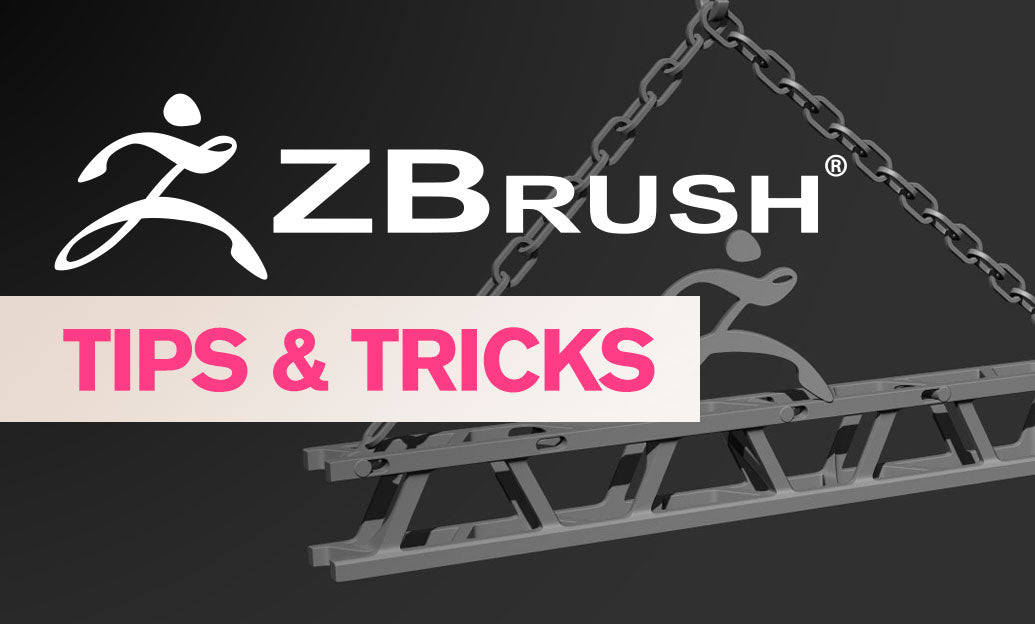Your Cart is Empty
Customer Testimonials
-
"Great customer service. The folks at Novedge were super helpful in navigating a somewhat complicated order including software upgrades and serial numbers in various stages of inactivity. They were friendly and helpful throughout the process.."
Ruben Ruckmark
"Quick & very helpful. We have been using Novedge for years and are very happy with their quick service when we need to make a purchase and excellent support resolving any issues."
Will Woodson
"Scott is the best. He reminds me about subscriptions dates, guides me in the correct direction for updates. He always responds promptly to me. He is literally the reason I continue to work with Novedge and will do so in the future."
Edward Mchugh
"Calvin Lok is “the man”. After my purchase of Sketchup 2021, he called me and provided step-by-step instructions to ease me through difficulties I was having with the setup of my new software."
Mike Borzage
ZBrush Tip: Enhancing ZBrush Renders with Best Preview Render (BPR) Techniques and Strategies
May 22, 2024 2 min read

Welcome to our tip of the day, where we explore ZBrush's Best Preview Render (BPR) to help you achieve more professional and polished renders. Whether you're presenting your work to a client or showcasing it in your portfolio, understanding how to use BPR effectively is crucial. Here are some insights to improve your rendering game:
- Understand BPR: BPR is a rendering feature in ZBrush that allows you to create high-quality renders with advanced lighting and shadowing effects without the need for an external renderer. To access BPR, simply press the 'Render' menu and click 'BPR Render'.
- Subsurface Scattering: For realistic renders of skin or other translucent materials, take advantage of the Subsurface Scattering (SSS) settings within the BPR settings. This will help you achieve a more natural and lifelike appearance in your characters and creatures.
- Shadows and AO: Fine-tune your shadows and Ambient Occlusion (AO) for better depth and definition. The 'BPR Shadow' and 'BPR AO' settings can be adjusted to control the darkness and softness of the shadows, adding realism to your model.
- BPR Filters: Leverage BPR filters to enhance your render post-processing without needing to use an image editing program. These filters can be used to adjust colors, add vignettes, or apply various artistic effects directly within ZBrush.
- Depth of Field: Utilize the Depth of Field (DOF) effect to focus attention on a specific area of your model. This is especially useful for close-up shots where you want to draw the viewer's eye to a particular detail.
- Lighting: Experiment with different lighting setups to highlight the form and texture of your model. Remember that lighting can dramatically change the mood of your render, so consider what atmosphere you want to convey.
- Render Passes: Render out multiple passes such as Shadow, AO, SSS, and Depth to composite in an external image editor for greater control over the final image.
- Material Tweaks: Adjust material properties right before rendering. Sometimes slight changes in specularity or color can make a big difference in the final render.
- Save BPR Settings: Once you have settings that work well for a particular project, save them to reuse in future renders. This can save time and ensure consistency across your work.
For the most in-depth information and resources on using ZBrush, pay a visit to NOVEDGE, where you can find extensive tutorials and software packages tailored to your 3D modeling needs.
Implementing these BPR strategies can elevate your renders and allow you to showcase your ZBrush models in the best light. Practice and experiment with these features to discover what works best for your artistic style and project requirements.
```You can find all the ZBrush products on the NOVEDGE web site at this page.
Also in Design News

Design Software History: The Evolution of Design Software in Renewable Energy: From Basic Drafting to Advanced Simulation and Optimization Techniques
October 17, 2025 11 min read
Read More
Streamlining Manufacturing: Integrating CAD and CAM for Precision and Efficiency
October 17, 2025 9 min read
Read More
Cinema 4D Tip: Optimizing Landscape Population in Cinema 4D with SurfaceSPREAD
October 17, 2025 3 min read
Read MoreSubscribe
Sign up to get the latest on sales, new releases and more …


